Bernard Butler shows off his guitar collection
Ex-Suede guitarist gives us the tour
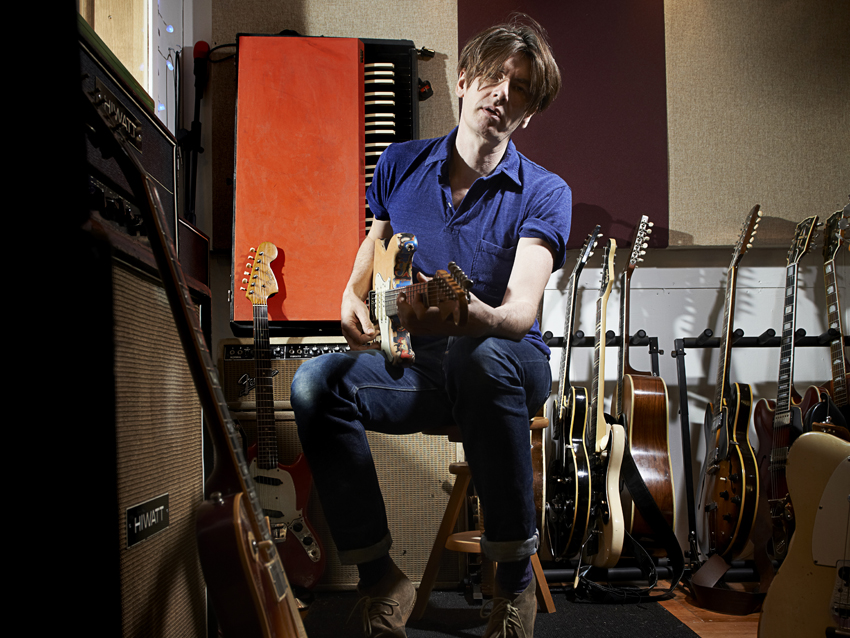
Bernard Butler shows off his guitar collection
North London native Bernard Butler found fame in 1992 as the guitar architect of Suede’s razor-sharp glam-pop sound, before making two albums with singer David McAlmont and a pair of acclaimed solo LPs.
As a producer/ collaborator/writer, he’s since worked with artists as diverse as The Libertines, Duffy, Tricky, Fyfe Dangerfield, Kate Nash, The Cribs, Sharleen Spiteri, the late Bert Jansch and many more. In 2009, Butler won the BRIT award for Producer Of The Year. In 2014, you’ll hear more of his new band, Trans, and his playing is to the fore on the forthcoming solo album by Everything But The Girl’s Ben Watt.
At heart, Bernard Butler just loves guitars. His studio may be at Unit 1 of this North London complex, but the door buzzer tellingly reads ‘355’. Inside Butler’s compact yet pro-spec studio, Guitarist finds just a handful of the instruments used throughout a dazzling career.
In his early 20s in Suede, Butler turned heads for his uniquely dramatic playing style: be it crunching riffs, flamboyant Bigsby-waggles or mercurial solos. He says: “I think my style came from when I started
playing. There was pop – Annie Lennox and all that – plus later indie-guitar stuff, but that seemed lacking in personality. There was too much staring at your effects pedals on the floor. All the things Suede did were simple and obvious – it simply had drama.
“Suede had an ethos. If everyone’s having fun down there [points right], we should go there [points far left]. You can join in with everyone else and have a little fun for a bit, but if you go in the opposite corner and face the wall, soon everyone will be going, ‘Oooh, what’s going on over there?’”
Of the numerous projects that have followed, Butler says: “It was always what I wanted to do, I think. Suede was a platform for me to play guitar. I’d write the music, Brett [Anderson] would write the lyrics and vocal melody. I’d be up all day working; he’d be up all night doing his parts.”
Butler and David McAlmont worked face- to-face more, but in recent years Butler has been perceived as a “backroom” producer/ player. “Not really true,” he insists. “On pretty much all the records I’ve produced, I’ve also played guitar and arranged. It’s on the cusp of songwriting.
“But working with other artists is a learning curve, and all situations differ. Duffy, I had heard via [Butler’s management company] Rough Trade. I didn’t hear greatness at first – just a female voice and acoustic guitar – but I thought it could be something. I met her, she was great and had a great voice. We hit it off. We wrote [the track] Rockferry in a couple of hours.”
Butler admits that some of the young bands he’s asked to produce and nurture are pushed his way because of his guitar collection and arrangement skills. “It’s harder for younger bands these days. A lot of players only have a Squier Telecaster and one or two amps; which is fine, but it’s nice to be able to say: ‘play this one, see what you think’. Everything I have is regularly played. This gear isn’t kept in glass cases, I don’t have hundreds more in storage.
“How much do people spend on cars? I don’t really care what I drive. My ES-355 is the most I’ve ever spent on a guitar, but I’ve played it pretty much every day since I bought it. And how much have I done with it? To me, all my gear has been good value.”
Click through out gallery to see Bernard's collection in all its glory...
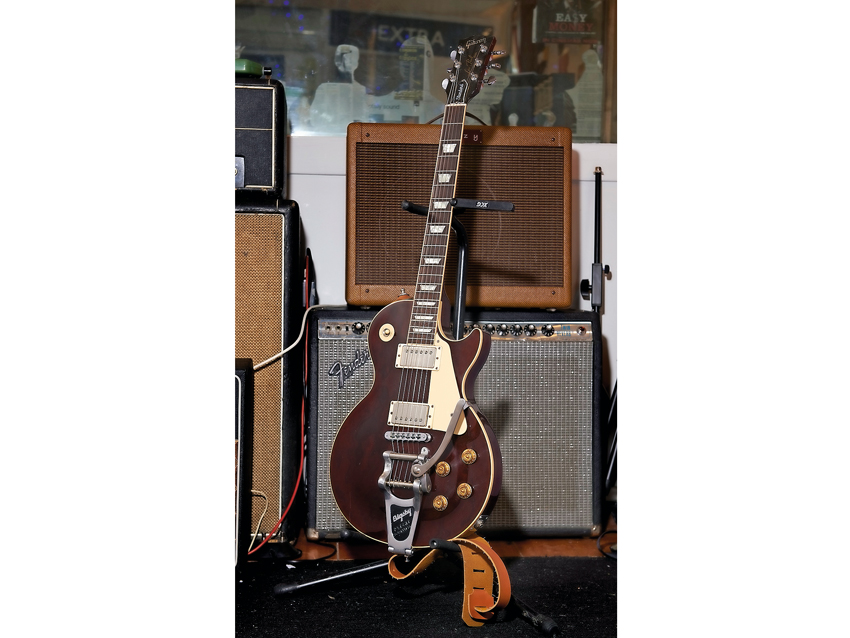
1991 Gibson Les Paul w/Bigsby
“My first proper Gibson Les Paul. I begged Brett (Anderson) and Justine (Frischmann)in Suede to lend me money to get a better guitar – I was playing an Epiphone Sheraton at the time.
"I used this until the first Suede album for rehearsals, writing and shows. And I soon got a Bigsby fitted on it. It wasn’t really about the sound, to be honest, I just loved the looks of Bigsbys. Keith Richards had his Bigsby Les Paul...
"I just wanted one. Once I got this, I started using Bigsbys a lot for playing and writing.”
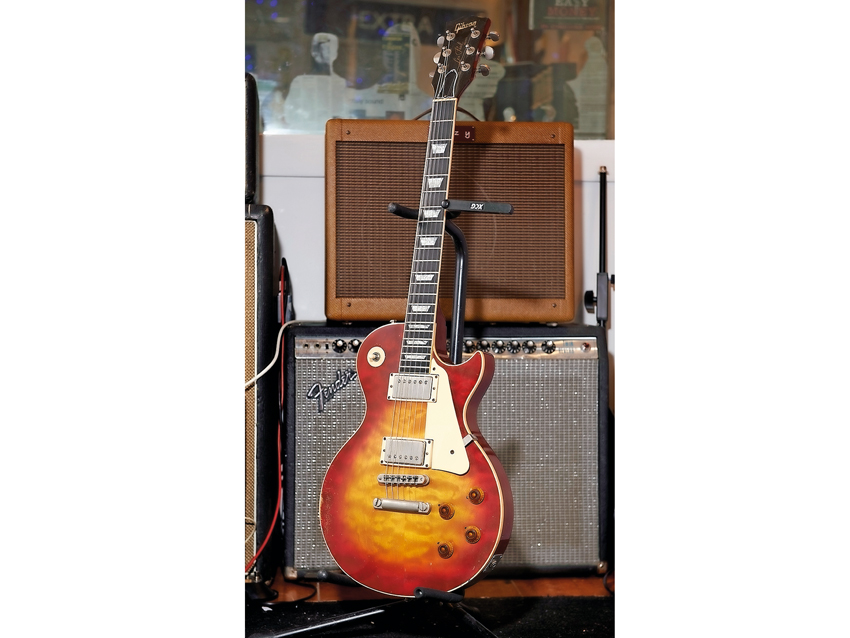
1981 Gibson Les Paul Heritage Elite 80
“The main guitar on Suede’s debut album. Phil Harris (of Harris Hire) found it for me. Phil is so funny. I arrived at his house and he said, ‘Awwright, let me get out the family photo album and show yer me kids!’ It was just pictures of his guitars. Memorable day.
“We went up to Phil’s London lock-up, where he had the Stones’ Keith Richards/ Mick Taylor sunburst Les Paul with a Bigsby. I wasn’t in a position to buy that! Then we went off to meet a guy who worked for Vox, whose whole wall was just AC30s.
"Half of the cabinets had come from Brian May – empty cabinets, props Brian used onstage in Queen. Phil Harris was full of mad plans about how we could sort these Vox cabinets for me, but I came away with just what I wanted: this Les Paul, and a few Vox AC30s. I still love this guitar. It was the first time Gibson had ‘properly’ reissued a ’59 Standard. It sounds superb, it can be warm or quite sharp. It has a great neck and lovely ebony fretboard.
“The riff for Suede’s Animal Nitrate was driven by this guitar. I tried to get a sort-of bass drum/snare effect on the riff and used all three pickup combinations for different parts. I like it when people think a song is hard, but it’s not. The chords are really simple. But slamming down my hand for the chorus and going to the bridge pickup on its own made it go bright. I try and do that all the time for different parts of songs.”
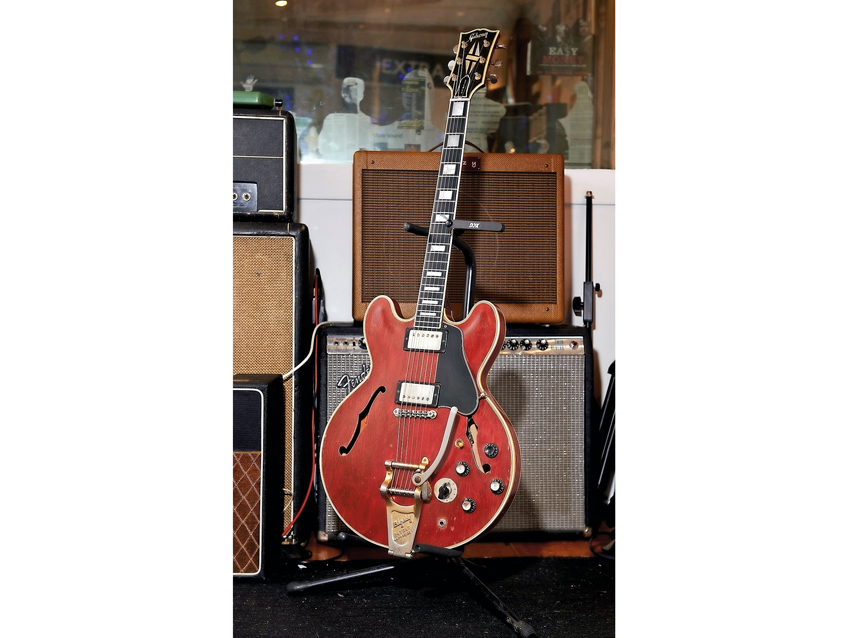
1961 Gibson ES-355
“Suede were touring North America in 1994 and my Gibson ES-345 got nicked in Toronto. I needed another, quick.
"I bought this at Guitar Center in Los Angeles for $4,500, the most I have spent on a guitar. The inspiration of getting a red ES-355 was Johnny Marr, but also Chuck Berry and Roy Orbison. My dad loved Roy Orbison, so big red semis are a childhood memory. From an early age, I thought: that’s an electric guitar.
“But Johnny playing one was one reason. I remember seeing The Smiths on The Tube, 1983, with Johnny playing a red ES-355. It’s odd, as he only played a 355 for about six months, but that was enough for me.
“I’ve just been touring with Ben Watt, and he says he was out shopping with Johnny when he bought his own red 355 that day in the 80s. It was at (Fat Rick’s) Vintage Guitar Emporium. I know Rick, too, and he’s joked, ‘if Johnny ever comes in we can close the doors, that’s business done for the day!’
“This is on a lot of my recordings, from late Suede to McAlmont & Butler, my solo albums, to my producing and playing. On Ben Watt’s album [due spring 2014], it’s all this 355 straight into my Lazy J 20 amp.”
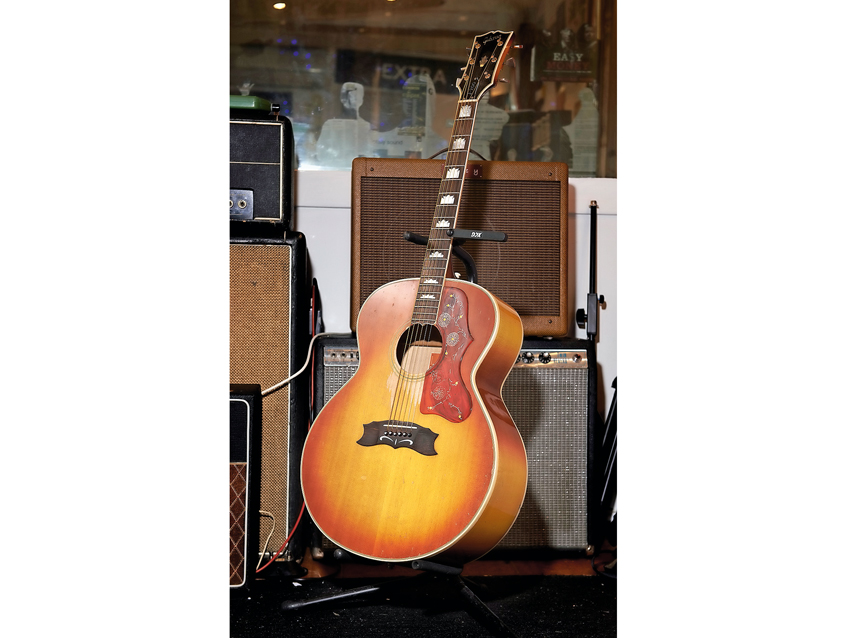
1971 Gibson J-200
“Bought from Andy’s in Denmark Street for £1,500, purely because I wanted a quality acoustic to record the first Suede album. It’s on virtually every Suede song, as a doubled rhythm track.
"I’d use it to just map out the basic song arrangement and then overdub electrics. Where did I get the money? It was a different industry back then. Management would just say, ‘Go and buy a great guitar if you need one’. So I did. And this is a great J-200 that’s still used all the time.”
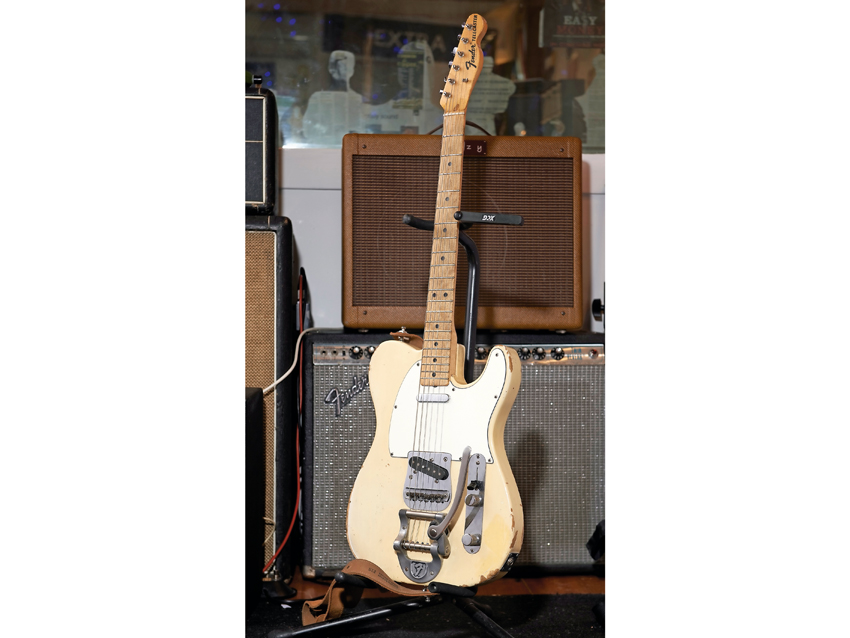
1960s Fender Telecaster w/Bigsby
“This is the main guitar on Suede’s The Wild Ones and New Generation. It’s also on McAlmont & Butler’s What’s The Excuse This Time? and Bring It Back. I bought it in LA on Suede’s second US tour.
" I remember getting a toy Fender battery amp, too, strapping it to my belt and wandering around hotels like a loon, writing new riffs. New Generation certainly came from that.
"I got [guitar tech] Bill Puplett to sand the lacquer off the fingerboard so it was more like a rosewood feel, so it’s naturally relic’d. If you can’t drop a Tele, it’s not a good Tele!”
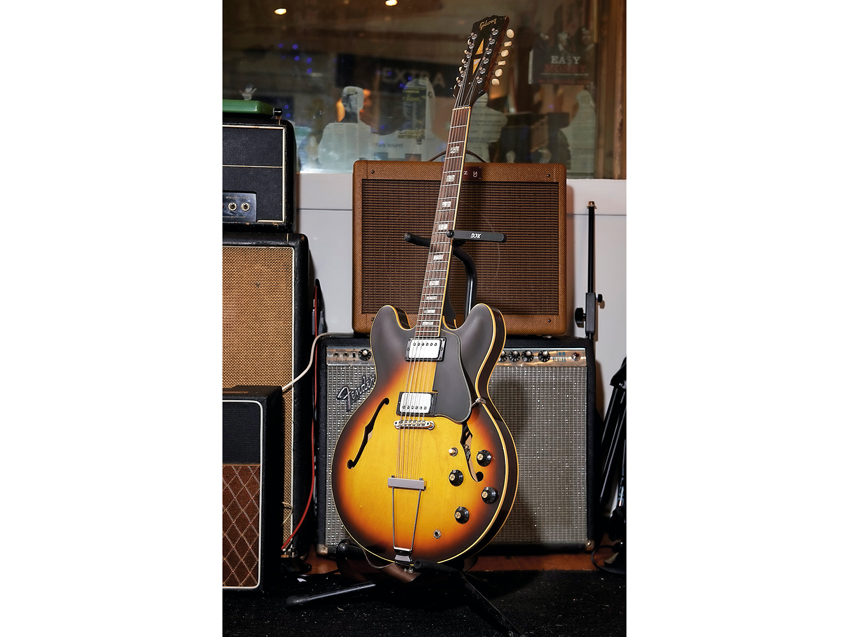
1968 Gibson ES-335 12-string
“Usually tried by every guitarist I produce, as 12-string 335s are quite unusual. I don’t initially tell people it came from Johnny Marr. I was a huge fan of Johnny, obviously, but we later became good friends.
“I went up to visit Johnny in 1995, and we played guitar together and watched Neil Young videos all night. Just before I left, Johnny said, ‘I want to show you this,’ and got out this 12-string. I told him I recognised it from The Smiths on Top Of The Pops and Sheila Take A Bow and Shoplifters Of The World Unite on The Tube in 1986; specific songs.
"He just said, ‘I knew you’d know all that... so you take it’. Amazing, but Johnny’s always so generous to me. We play very differently which, believe me, wasn’t my intention when I started. This is the main guitar on The Smiths’ Stop Me If You’ve Heard This One Before, and I wrote [debut solo single] Stay on it. A special guitar.”
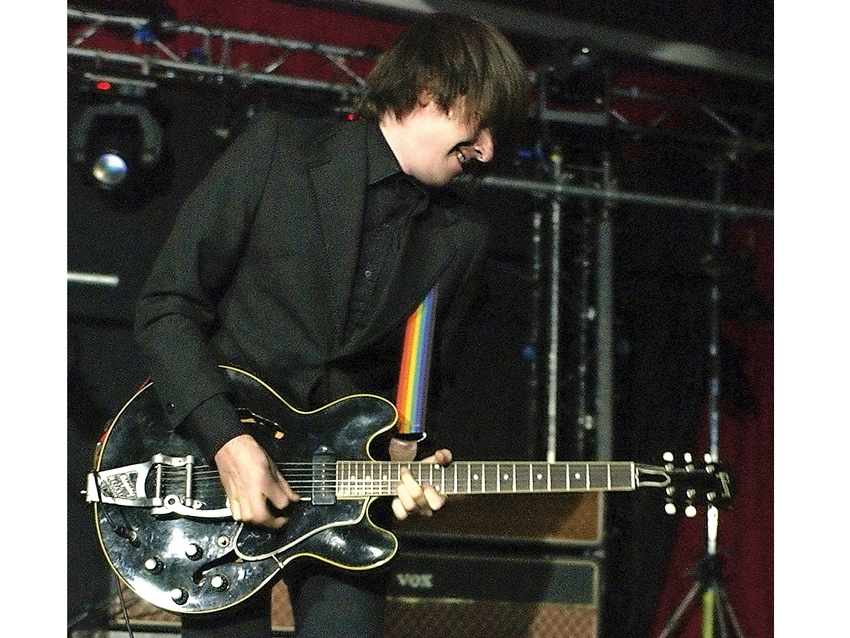
1961 Custom Black Gibson ES-330
“I was recently alerted to this being the subject of a thread on the Les Paul forum! Apparently, there were only five ever made in Custom Black.
"I’ve got one, Keith Richards and his roadie have one each, and there are two others. But mine is in the best nick! I bought it from Chelsea Guitars in NYC in ’97. You can hear it on Duffy’s Syrup And Honey. I recently strung it with 0.012s and played in DADGAD for the Bert Jansch concert with Robert Plant.”
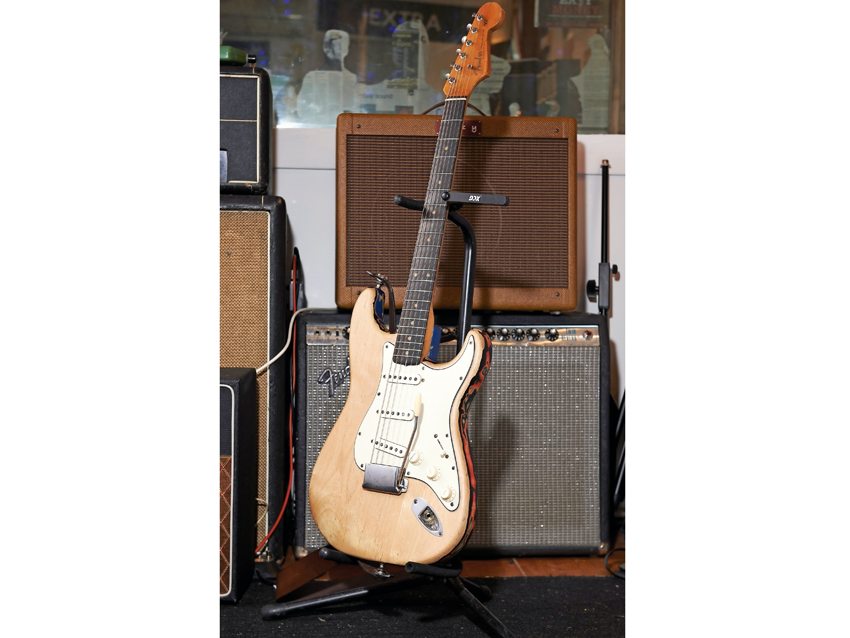
1962 Fender Stratocaster
“My current main guitar. It was light blue, but I’ve gradually hand-scraped the front’s finish off with a razor blade. Sacrilege? No... it was a refinish already.
"I always wanted a Strat but until I got this, I’d genuinely never even played one. Maybe it was those 80s formative years. Indie guitarists didn’t want to play Les Pauls, they were ‘too rock’... so I bought a Les Paul. And there were so many Strats around in the 80s, maybe I just consciously ignored Strats.
“It’s strange how I got into it. A few years ago, I broke my leg playing football, as stupid 40-year-olds do. I had to cancel all work, but that was okay, as I was getting bored with doing the same things and the sound of my ES-355 on everything I did. The same week, Bert (Jansch) died. I was laid on the sofa, thinking about everything I was doing. I had a proper mid-life crisis. I’d tried this Strat via the engineer at Konk (The Kinks’ Studio), who was selling guitars for a friend. I was laid up on the sofa just playing it and decided, ‘I want to buy it’.
“Mainly, I wanted to change the way I played guitar, just to see what would happen. It’s like changing shoes; you walk differently down the street. So while I was laid up on massive painkillers, I decided to get back into just playing guitar, and to do that, I bought this Strat.
“I have to work harder on a Strat. Gone was the Bigsby, the bassy reverb of my Gibsons, there’s less sustain. But it felt really simple, and that was a good thing. I had a sound in my head that was direct, wiry and less structured. And that’s what you hear with Trans.”

Amplifiers
Studio 355 has a solid stash of classic valve amps, from Fender to Hiwatt, with Vox being Butler’s favoured brand for most of his career – he has quite a few AC30s, an AC50 head (£400 via Loot), an AC15 and an AC4.
“All my AC30s are from the Suede days and they only cost me £200 each,” Butler says. “The AC15 is very good for recording. It’s bassy, really clean – I got that on eBay. I used it on all the Duffy recordings.”
But there’s one notable new amp, a Lazy J 20, which is now Bernard’s favourite.
“Phil Harris called and said he’d found the best new amp he’d ever heard. I was fed up that every time I moved one of my lovely old things, some kind of unwanted noise spoilt things. I’d got into recording with small speakers – my Vox AC4, Gibson Skylark, Watkins Westminster, my Fender Vibro Champ – but all were decrepit. All those amps drive early without needing volume, but also have limited controls. You have to work the guitar’s tone, volume pots and pickups harder.
“The Lazy J had everything, but with its own character. Plus, it has a voltage control which acts as a master. The Normal and Bright channels affect each other’s tone, even when not in use. I asked Jesse (Hoff, Lazy J maker) to fit a spring and tremolo unit to give me my perfect portable amp. It’s my only amp for Trans. The only problem with my Lazy J [there’s a long waiting list – Ed] is how long I’ll have to wait for a backup.”
“Its mission is simple: unleash the power of any amplifier or line-level source without compromise”: Two Notes promises a “watershed” in tube amp control with the Torpedo Reload II
MusicRadar deals of the week: Enjoy a mind-blowing $600 off a full-fat Gibson Les Paul, £500 off Kirk Hammett's Epiphone Greeny, and so much more
“Its mission is simple: unleash the power of any amplifier or line-level source without compromise”: Two Notes promises a “watershed” in tube amp control with the Torpedo Reload II
MusicRadar deals of the week: Enjoy a mind-blowing $600 off a full-fat Gibson Les Paul, £500 off Kirk Hammett's Epiphone Greeny, and so much more











